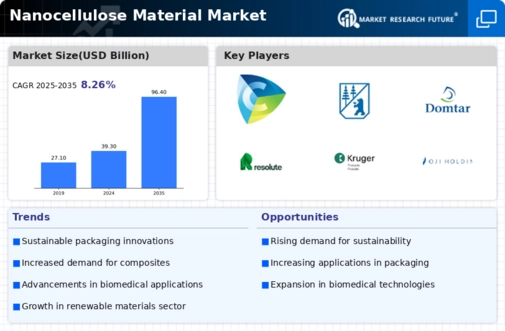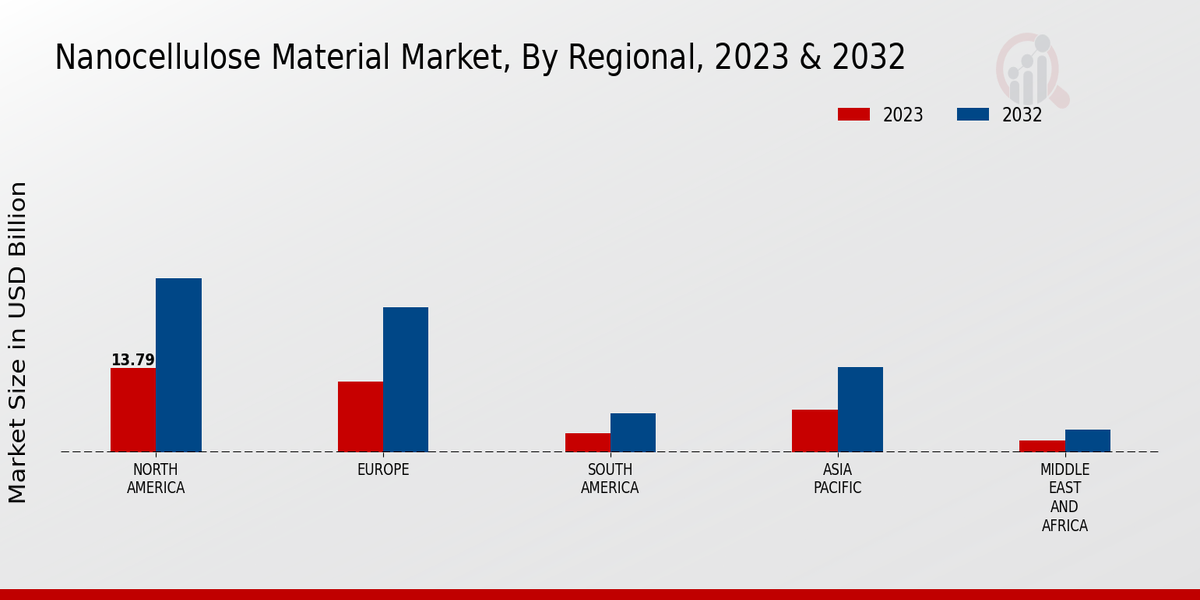Government Support and Funding
Government support and funding play a crucial role in the advancement of the Global Nanocellulose Material Market Industry. Various governments worldwide are investing in research and development initiatives aimed at promoting nanotechnology and its applications. This support often translates into grants and subsidies for companies engaged in nanocellulose production and innovation. For example, initiatives in Europe and North America focus on enhancing the competitiveness of sustainable materials, which directly benefits the nanocellulose sector. Such governmental backing not only fosters innovation but also encourages collaboration between academia and industry, further propelling market growth.
Growing Awareness of Health Benefits
The growing awareness of health benefits associated with nanocellulose is driving its adoption in the Global Nanocellulose Material Market Industry. As consumers become more health-conscious, there is an increasing demand for products that are safe and beneficial. Nanocellulose is recognized for its potential health advantages, including its role as a dietary fiber and its applications in food products that promote gut health. This trend is particularly evident in the food and beverage sector, where manufacturers are incorporating nanocellulose to enhance nutritional profiles. The rising consumer preference for health-oriented products is likely to bolster the market further.
Rising Demand for Sustainable Materials
The Global Nanocellulose Material Market Industry experiences a surge in demand for sustainable materials as industries seek eco-friendly alternatives. Nanocellulose, derived from renewable sources, presents a biodegradable option that aligns with global sustainability goals. The increasing awareness of environmental issues drives manufacturers to adopt nanocellulose in various applications, including packaging and textiles. This shift is evidenced by the projected market growth from 39.3 USD Billion in 2024 to 96.4 USD Billion by 2035, indicating a robust CAGR of 8.49% from 2025 to 2035. Such growth reflects a broader trend towards sustainability in material science, positioning nanocellulose as a key player in the future of green materials.
Innovations in Nanocellulose Applications
Innovations in the applications of nanocellulose significantly contribute to the expansion of the Global Nanocellulose Material Market Industry. Researchers and companies are exploring diverse uses, including in biomedical fields, electronics, and food packaging. For instance, nanocellulose is being utilized in drug delivery systems due to its biocompatibility and ability to enhance the efficacy of pharmaceuticals. Additionally, its use in food packaging enhances barrier properties, extending shelf life while maintaining safety. As these applications evolve, the market is expected to see substantial growth, driven by technological advancements and the increasing need for multifunctional materials.
Chart: Global Nanocellulose Material Market Growth
This chart illustrates the projected growth trajectory of the Global Nanocellulose Material Market Industry, highlighting the anticipated increase from 39.3 USD Billion in 2024 to 96.4 USD Billion by 2035. The chart also indicates a CAGR of 8.49% for the period from 2025 to 2035, showcasing the robust potential of nanocellulose as a transformative material in various industries.





















